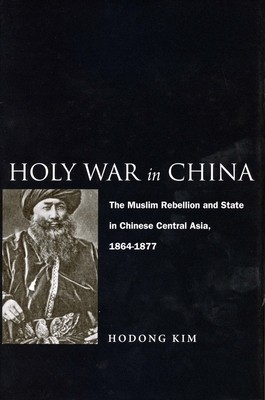
- We will send in 10–14 business days.
- Author: Hodong Kim
- Publisher: Stanford University Press
- ISBN-10: 0804748845
- ISBN-13: 9780804748841
- Format: 16.8 x 24.2 x 2.3 cm, hardcover
- Language: English
- SAVE -10% with code: EXTRA
Reviews
Description
In July 2009, violence erupted among Uyghurs, Chinese state police, and Han residents of Ãrümqi, the capital city of Xinjiang, in northwest China, making international headlines, and introducing many to tensions in the area. But conflict in the region has deep roots. Now available in paperback, Holy War in China remains the first comprehensive and balanced history of a late nineteenth-century Muslim rebellion in Xinjiang, which led to the establishment of an independent Islamic state under Ya'qūb Beg. That independence was lost in 1877, when the Qing army recaptured the region and incorporated it into the Chinese state, known today as the Xinjiang Uyghur Autonomous Region.
Hodong Kim offers readers the first English-language history of the rebellion since 1878 to be based on primary sources in Islamic languages as well as Chinese, complemented by British and Ottoman archival documents and secondary sources in Russian, English, Japanese, Chinese, French, German, and Turkish. His pioneering account of past events offers much insight into current relations.
EXTRA 10 % discount with code: EXTRA
The promotion ends in 15d.01:52:20
The discount code is valid when purchasing from 10 €. Discounts do not stack.
- Author: Hodong Kim
- Publisher: Stanford University Press
- ISBN-10: 0804748845
- ISBN-13: 9780804748841
- Format: 16.8 x 24.2 x 2.3 cm, hardcover
- Language: English English
In July 2009, violence erupted among Uyghurs, Chinese state police, and Han residents of Ãrümqi, the capital city of Xinjiang, in northwest China, making international headlines, and introducing many to tensions in the area. But conflict in the region has deep roots. Now available in paperback, Holy War in China remains the first comprehensive and balanced history of a late nineteenth-century Muslim rebellion in Xinjiang, which led to the establishment of an independent Islamic state under Ya'qūb Beg. That independence was lost in 1877, when the Qing army recaptured the region and incorporated it into the Chinese state, known today as the Xinjiang Uyghur Autonomous Region.
Hodong Kim offers readers the first English-language history of the rebellion since 1878 to be based on primary sources in Islamic languages as well as Chinese, complemented by British and Ottoman archival documents and secondary sources in Russian, English, Japanese, Chinese, French, German, and Turkish. His pioneering account of past events offers much insight into current relations.


Reviews